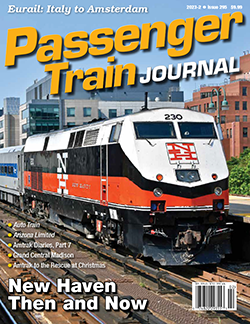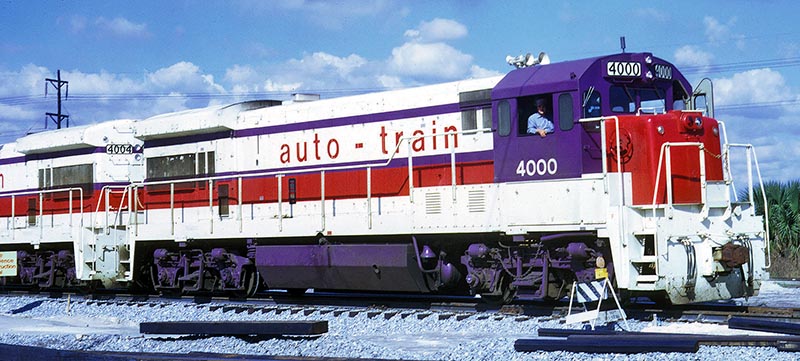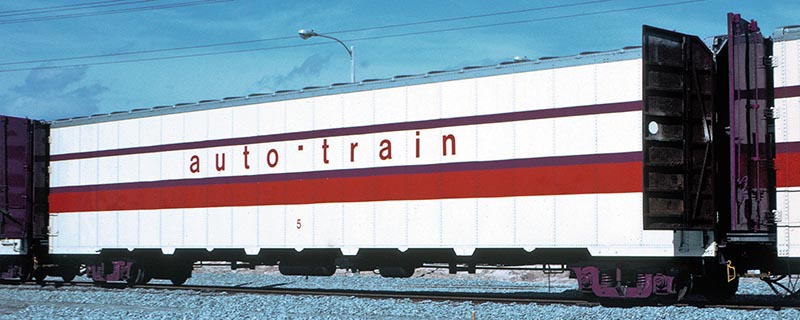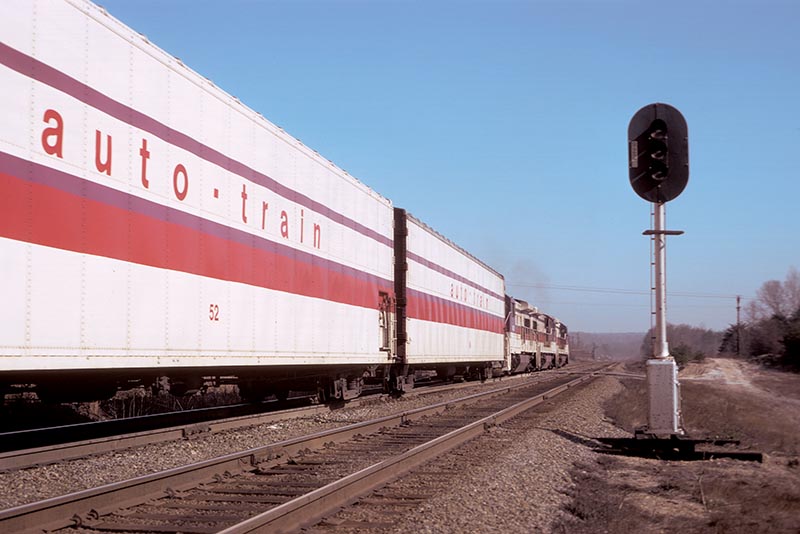 by Jack M. Turner/photos as noted
by Jack M. Turner/photos as noted
The lure of sun ’n’ fun has long attracted droves of tourists to Florida with the heaviest concentration being in winter. In the 1950s and 1960s northern tourists flocked to highways such as U.S. 1, U.S. 17, and U.S. 301 running down the eastern seaboard. Motor courts built in an L-shape, with a swimming pool in the center, sprang up in towns along the way, and soon the names Quality Courts, Holiday Inn, and Howard Johnson were synonymous with planning a road trip.
During this period, Interstate 95 opened one segment at a time, attracting travelers by bypassing stoplights and speed traps in small-town America. For a while this was a great way to travel, but with the opening of Walt Disney World and other central Florida attractions, the highways became jammed and driving was a less-desirable option. Passenger trains had for many years done a good trade, as testified by the 18-car consists of the Silver Meteor, Silver Star, East and West Coast Champions, and the winter-season Florida Special. Air travel was also hitting its stride, and large numbers of visitors took to the skies for vacations in sunny Florida.

ABOVE: General Electric U36B 4000 at Sanford, Fla., the new company’s southern terminal, in October 1971, a few weeks before service began. —Imre Quastler; Kevin EuDaly collection
The problem with rail and air travel alike was that tourists needed a car when they reached their destination. This was especially true for winter “snowbirds” (as northerners escaping the grip of winter are known) who fled the chilly northeast for tropical Florida for the winter season. This opened an opportunity for a budding entrepreneur named Eugene K. Garfield.
Gene Garfield was an attorney for the federal government and was aware of the rising number of automobiles plying the highways to Florida. He developed a plan to carry people and their automobiles between the Washington, D.C., area and central Florida. The timing was perfect, as surplus passenger cars were available due to the formation of Amtrak, which left an abundance of equipment available from the nation’s railroads. Garfield named his new service Auto-Train Corporation and secured investors to fund the startup company.
Agreement was reached with the Seaboard Coast Line (SCL) and Richmond, Fredericksburg & Potomac (RF&P) railroads to run the trains. The northern terminal was established at Lorton, Va., just south of Washington, D.C., with easy access to I-95 and the I-495 Capital Beltway for travel to and from populous Northeastern cities. The southern terminal was built at Sanford, Fla., midway between Orlando and Daytona Beach. This location was within four or five hours of most Florida destinations, with I-4 a couple of miles away and the other major north/south Interstates within an hour’s drive.

ABOVE: Double-deck auto carrier 5 awaited loading at Sanford in December 1971. —Joseph L. Oates; ACL & SAL Historical Society Collection
New General Electric U36B locomotives pulled the trains, with steam-generator cars supplying heat to the passenger cars. Rolling stock primarily came from Santa Fe and Union Pacific, and included an impressive fleet of full-length dome and short-dome coaches and food service cars, and single-level sleeping cars and dining cars. This fleet was augmented by a few cars from Western Pacific, Louisville & Nashville, SCL, and RF&P. The ex-Santa Fe sleepers initially retained their unpainted stainless-steel exteriors, while the former UP sleepers still wore their original Armour Yellow paint. Auto carriers were former Canadian National cars. The entire fleet was soon painted in AT’s distinctive white scheme with red and purple striping.
The first Auto-Train entered service on December 1, 1971. Onboard staff members were mostly young, attractive females outfitted in either purple dresses with red and yellow accent stripes or pantsuits in the same colors. Ground service personnel who assisted arriving and departing passengers again were mostly young females who wore red and yellow outfits resembling overall shorts.
Automobile fares were between $119 (low season) and $149, while adult fares ran between $69 and $79. A bed-room for two was priced at $85-$95 with a modest higher charge for three- and four-person accommodations. At first, the auto carriers were located directly behind the engines, but they were eventually moved to the rear of the train to reduce uncomfortable slack action to passengers.
Initially, trains departed both terminals at 8:00PM and traveled overnight with only a service and operating crew change stop in Florence, S.C. Arrival at the other end of the line was carded for 11:30AM. Passengers had to check their car in at least two hours before departure and left their cars packed, as only small overnight bags were needed for the overnight ride. Autos were loaded onto the enclosed cars by trained Auto-Train employees and could not be accessed until they were unloaded at the destination…



